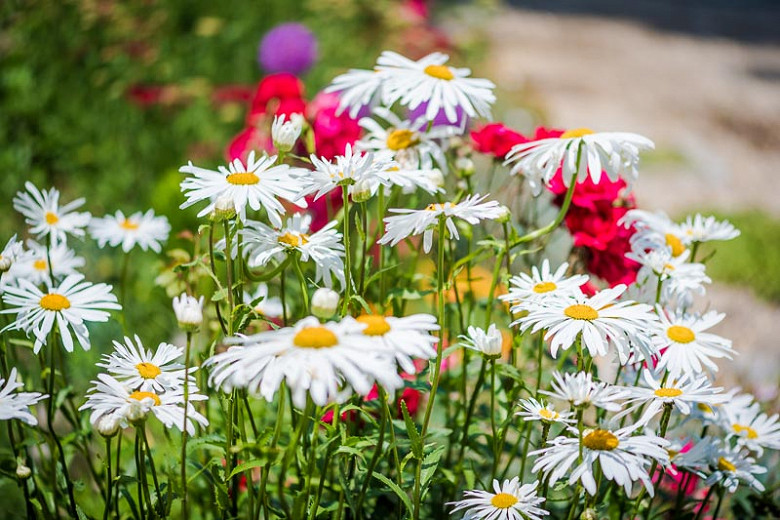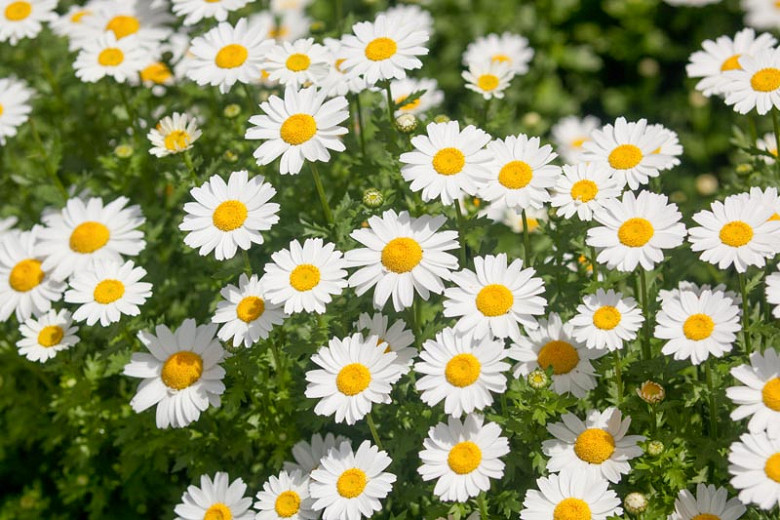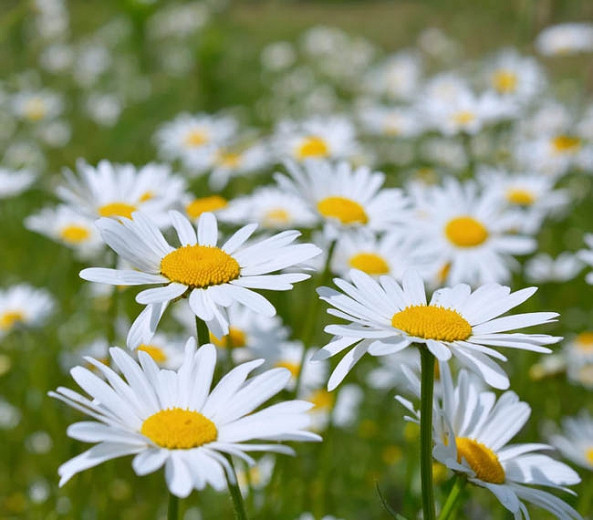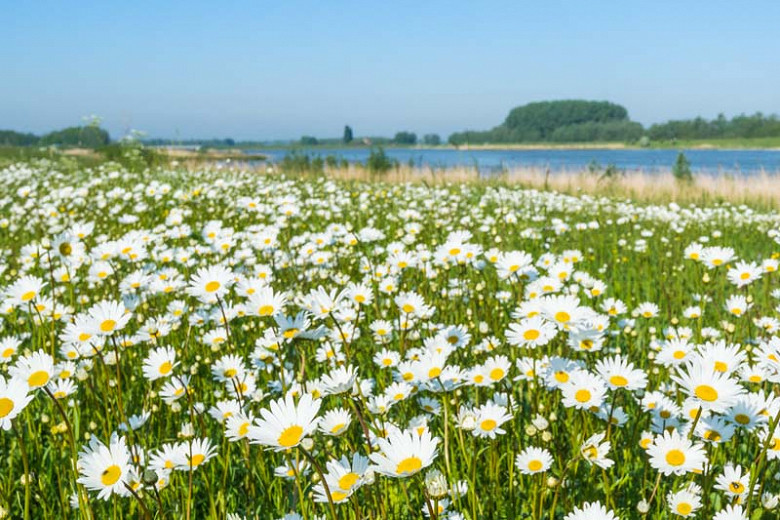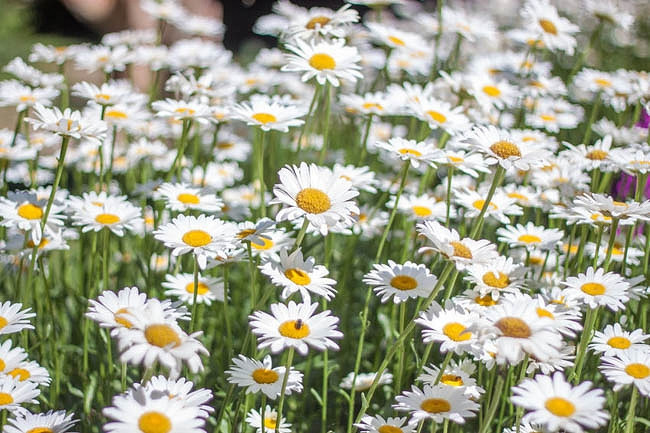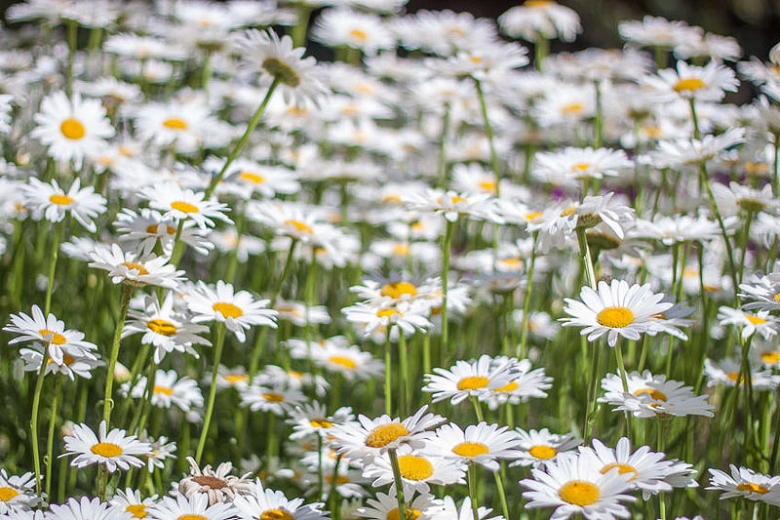Leucanthemum x superbum (Shasta Daisy)
Highly floriferous and robust, Leucanthemum x superbum (Shasta Daisy) is a free flowering herbaceous perennial valued for its abundant floral display and disease resistance. It produces a sea of large, pure white, single daisy flowers with golden yellow centers atop a lush basal rosette of dark green leaves. Blooming for weeks from early to late summer, the flowers are pollinated primarily by insects, including beetles, flies, wasps, and butterflies. Extremely easy to grow, there is a Shasta Daisy for every garden and every taste thanks to the profusion of cultivars presenting different levels of compactness, floral size, flowering type (single or double), longevity, or repetitiveness of the bloom period. Shasta Daisy is a valued addition to the perennial border, cottage garden, cutting garden, or prairies and meadows.
- Grows up to 24-36 in. tall (60-90 cm) and 18 in. wide (45 cm).
- Thrives in full sun in moderately fertile, moist but well-drained soil. Light shade is tolerated, specifically in hot summer areas. Good soil drainage is critical. Drought and dry soil tolerant.
- Excellent choice for perennial borders, cottage gardens, prairies, and meadows. Plant in small groups for better visual impact. Makes excellent and long-lasting fresh-cut flowers.
- Robust, low maintenance, and virtually disease-free, this daisy is deer, and rabbit resistant. Keep an eye out for leaf spots and aphids.
- Remove spent flowers to promote further blooms and maintain a neat appearance. Cut stems down to the ground in winter.
- Propagate by division in early spring or late summer.
- Leucanthemum x superbum is a hybrid resulting from a cross between L. vulgare (Ox-Eye Daisy), L. maximum (Pyrenees Chrysanthemum), L. lacustre (Portuguese Field Daisy) and Nipponanthemum nipponicum (Japanese Field Daisy).
Requirements
| Hardiness | 5 – 9 |
|---|---|
| Heat Zones | 5 – 8 |
| Climate Zones | 1, 1A, 1B, 2, 2A, 2B, 3, 3A, 3B, 4, 5, 6, 7, 8, 9, 10, 11, 12, 13, 14, 15, 16, 17, 18, 19, 20, 21, 22, 23, 24, A1, A2, A3, H1 |
| Plant Type | Perennials |
| Plant Family | Leucanthemum – Daisies |
| Exposure | Full Sun, Partial Sun |
| Season of Interest | Summer (Early,Mid,Late) |
| Height | 2' – 3' (60cm – 90cm) |
| Spread | 1' – 2' (30cm – 60cm) |
| Spacing | 18″ (45cm) |
| Water Needs | Average |
| Maintenance | Low |
| Soil Type | Chalk, Clay, Loam, Sand |
| Soil pH | Acid, Alkaline, Neutral |
| Soil Drainage | Moist but Well-Drained |
| Characteristics | Cut Flowers, Showy |
| Tolerance | Deer, Drought, Rabbit, Dry Soil |
| Attracts | Butterflies |
| Garden Uses | Beds and Borders |
| Garden Styles | Informal and Cottage, Prairie and Meadow |

